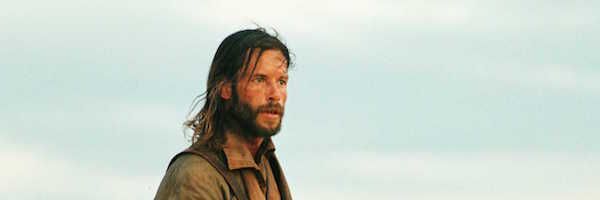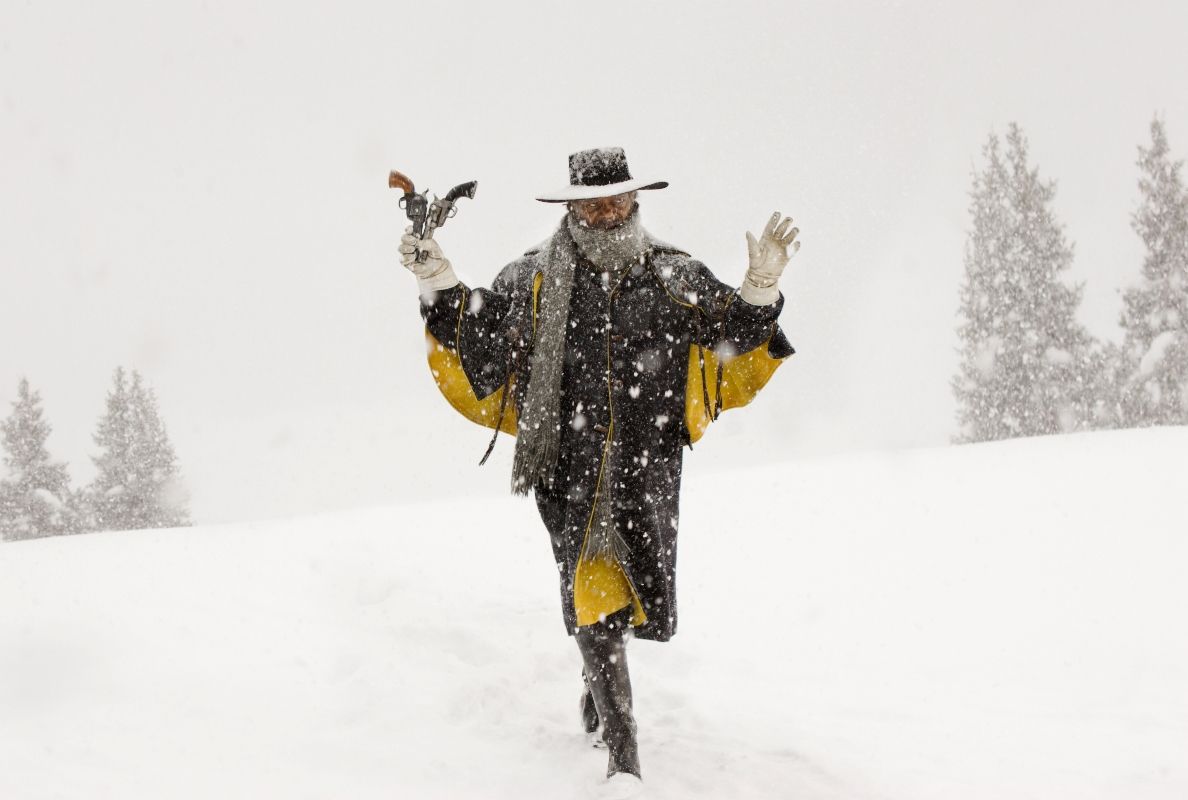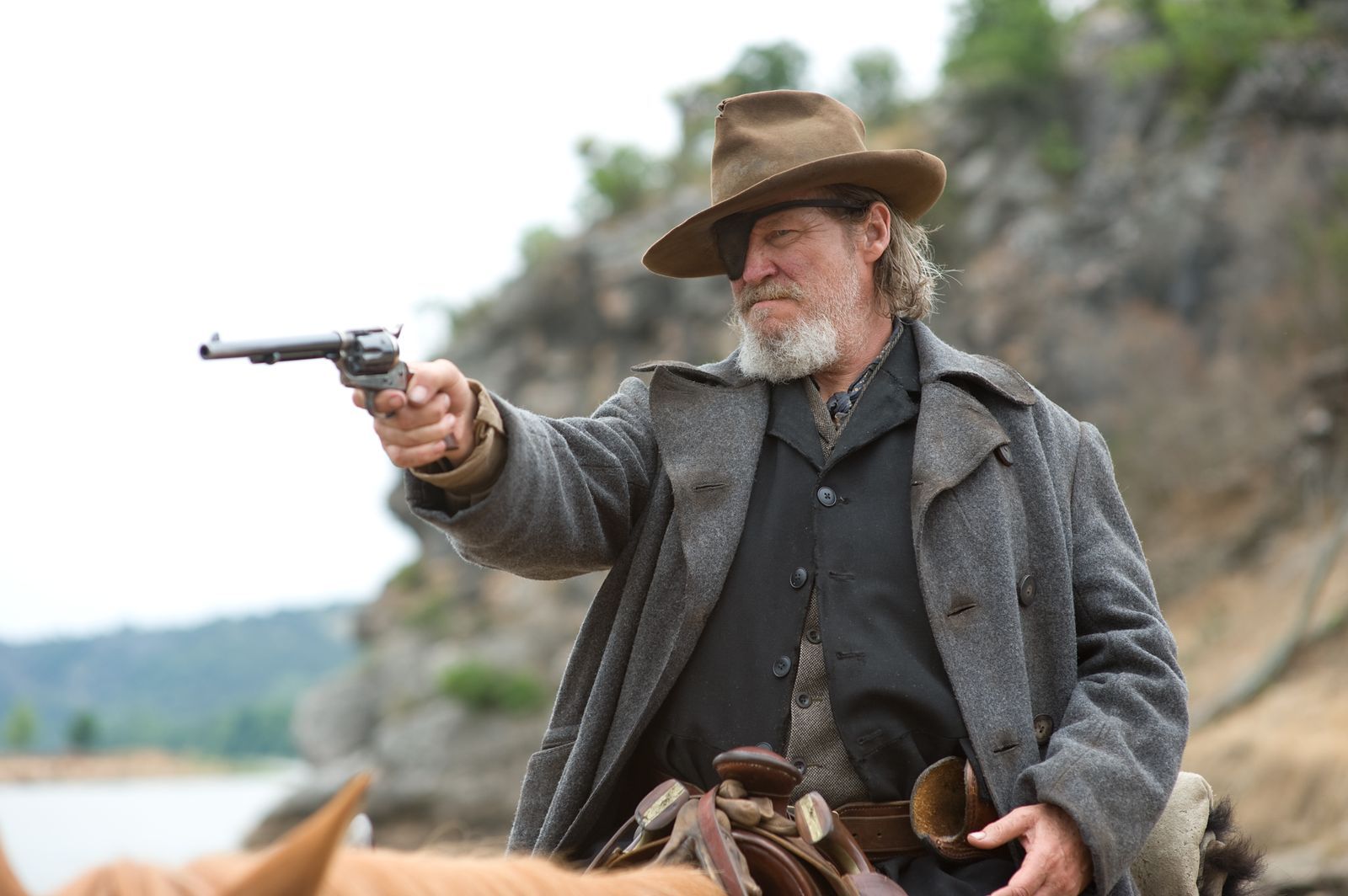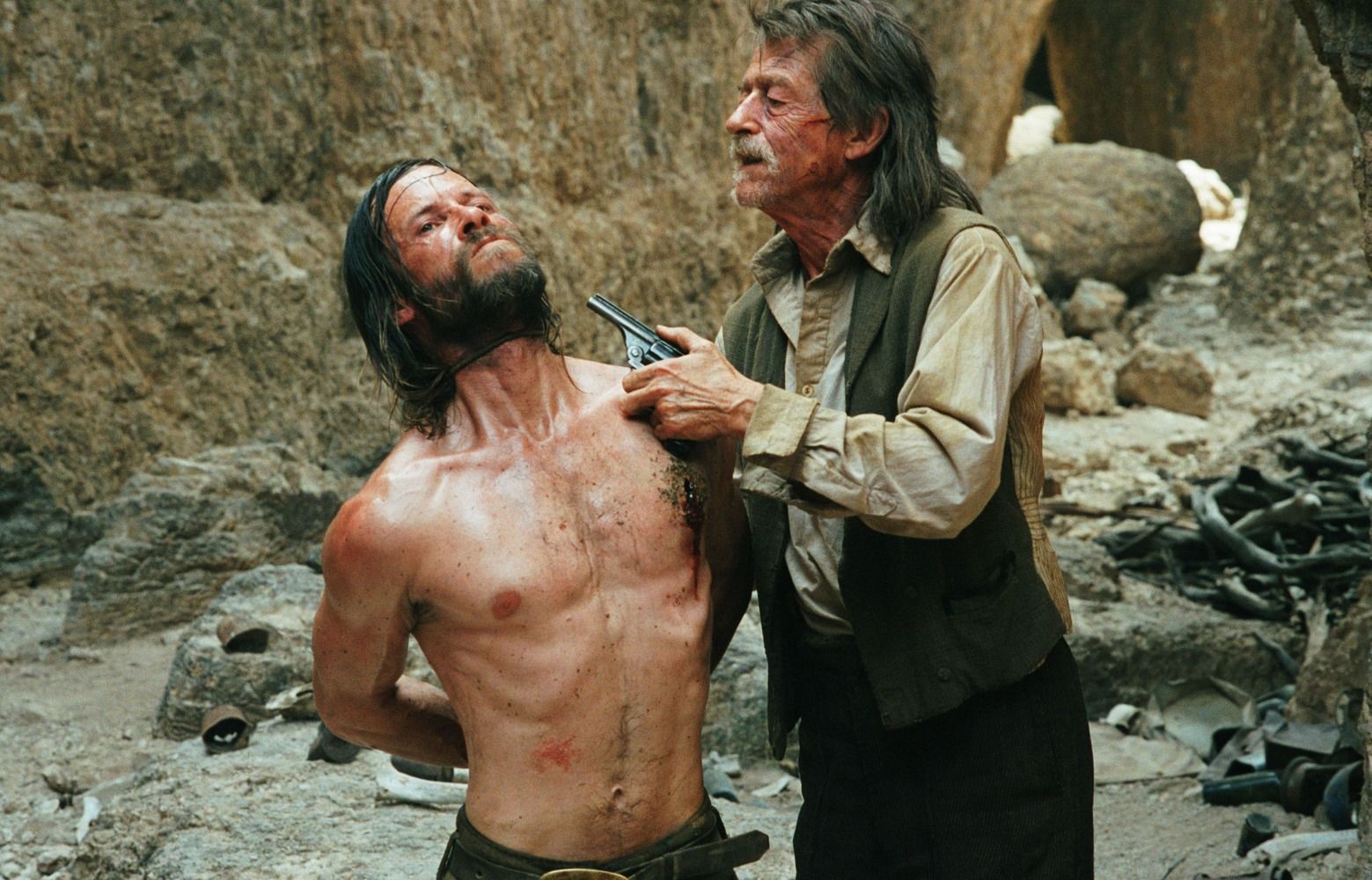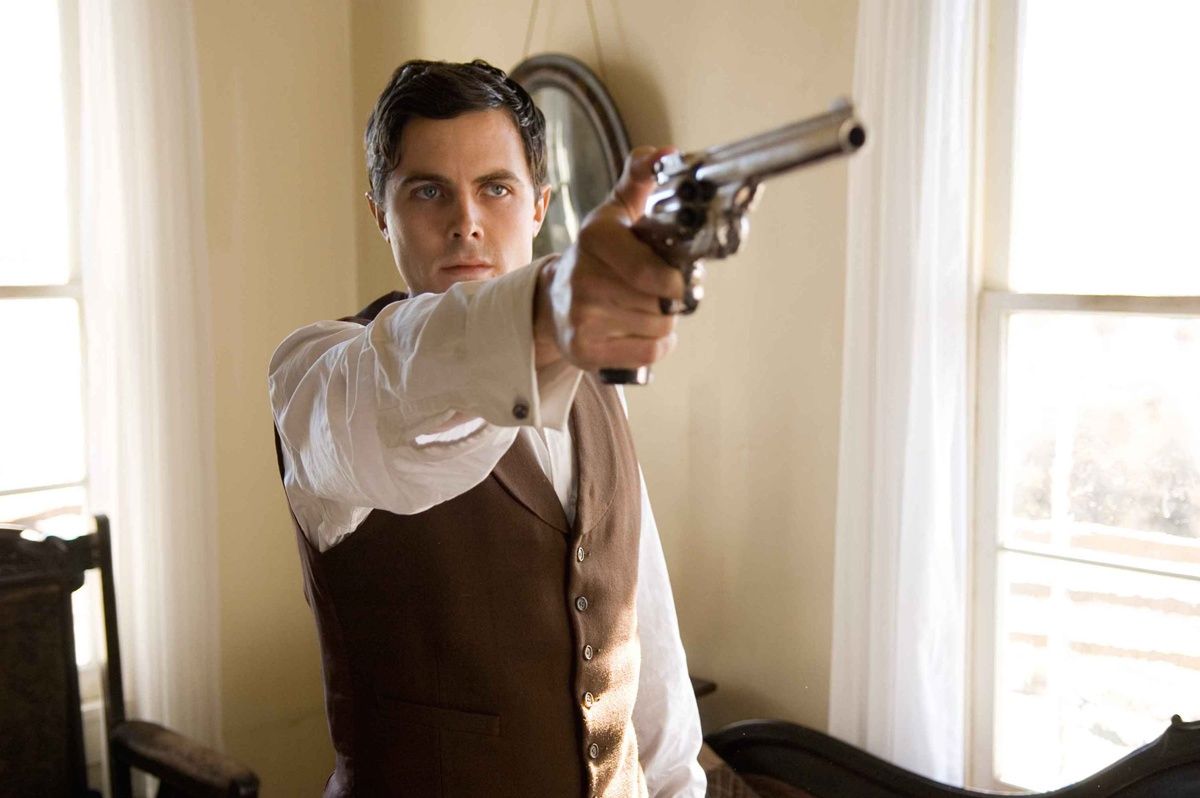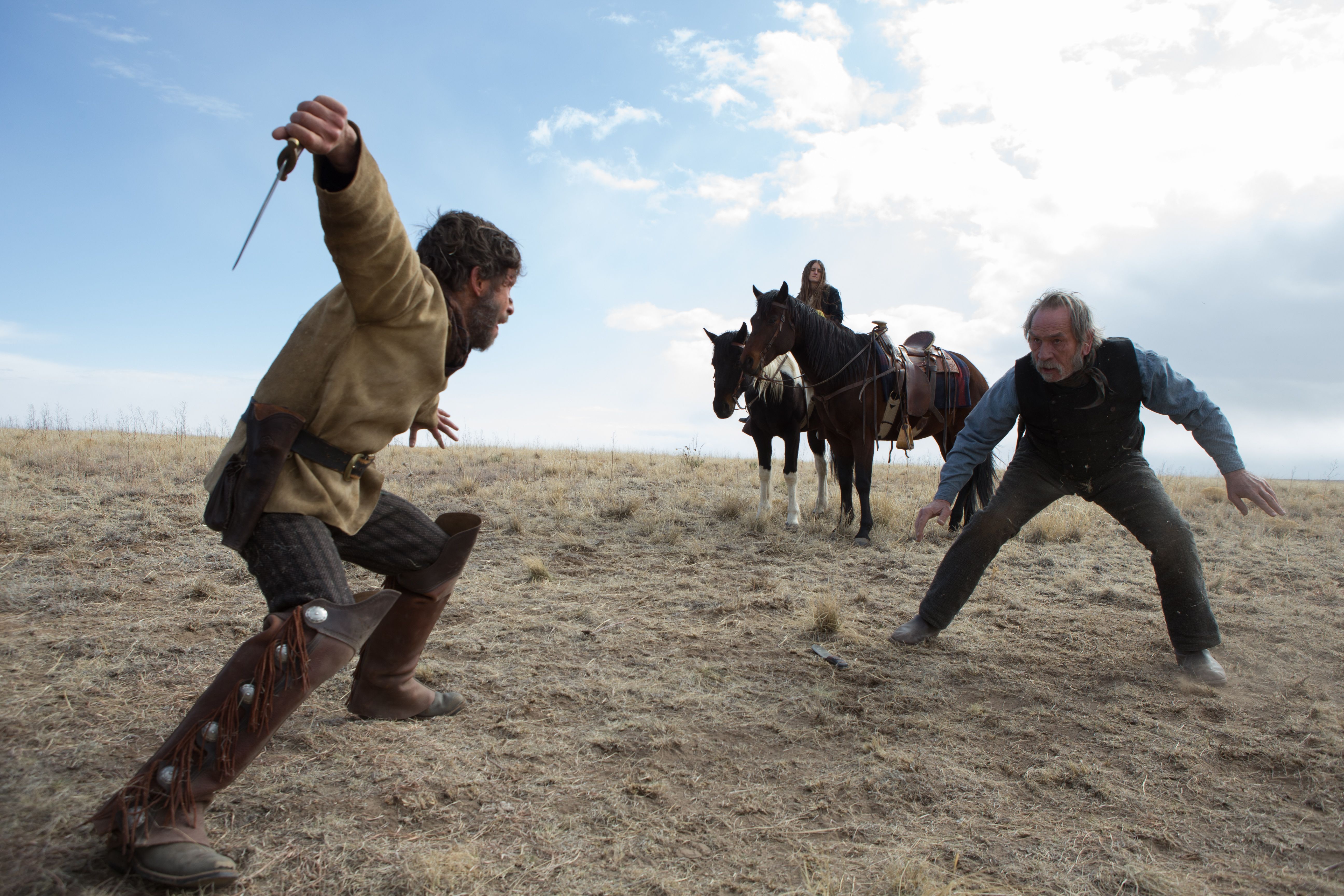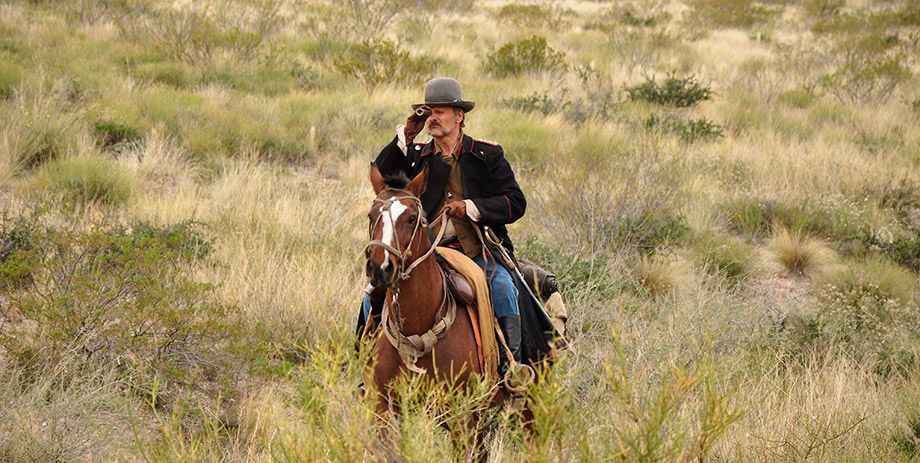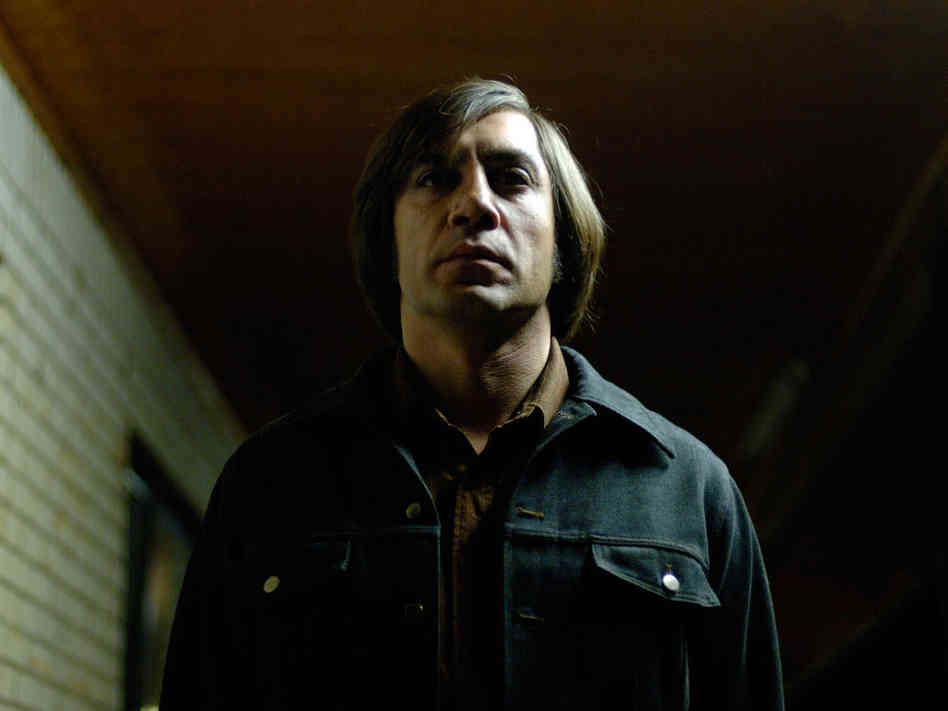From the very moment of its inception, the Western was destined to change. At first, that particular change came across very slow. Quite a lot happened to John Ford between 1939, when the troubling Drums Along the Mohawk, and 1956, when he unleashed The Searchers, in which he seemingly faced the history of ugly racist archetypes that he had hinged several of his films on. Some of those were big hits.
So, a fictional corrective like Django Unchained is welcome, as is it’s superior follow-up, The Hateful Eight. Though the genre is not without its misfires, neo-westerns that either replicate the time or echo it in a different, even alien time have a special nostalgic place in my heart. And with the relative success of something like Hell or High Water, my fascination with the genre doesn’t seem to be all that unique in the make-up of the tastes of the modern movie-going public.
They’re also fertile ground for remakes. The way a director handles the period detail, or decides to upgrade it, often says quite a lot about that director’s stylistic personality. The original Magnificent Seven, a remake of Akira Kurosawa’s classic Seven Samurai, is not a particularly thrilling shootout, and the idea of rejiggering the formula for a new take remains a promising concept. We won’t know how Antoine Fuqua’s take on that classic turns out until this weekend, but there have been plenty of great neo-westerns to be released in theaters over the last few decades. Here are a handful of titles you should check out immediately.
'The Hateful Eight'
For his follow-up to Django Unchained, Quentin Tarantino stepped up to the plate to take on one of his biggest influences, the unparalleled Sergio Leone. That’s where the sense of space and size in the film comes from, the feeling that these blood-lusting criminals and bounty hunters are colossal figures in a tremendous, vast setting that mirrors modern America. And for the most part, the trick works stupendously well. Whether at home or at the 70mm screening of the film in Berlin, where I first saw it, The Hateful Eight goes beyond its seemingly adolescent, controversy-baiting narrative, which packs eight enigmatic characters into Minnie’s Haberdashery to find out who exactly they are to one another. The mystery unfolds with precision and yet there’s an overall shagginess to Tarantino’s visual storytelling that helps the film evade any ambience of over-direction. The writer-director’s ideas about race are not quite out front as they were in Django, but there’s a more potent, messy overall feeling of watching people say what they think without niceties, decked out in exquisite period wardrobes and a gorgeously appointed setting. The journeying and romance one might expect from a Western goes inward or has faded into the past in The Hateful Eight, and what’s left is a grandiose, grotesque triumph of untamable fury and unending suspicion. That it’s also essentially John Carpenter’s The Thing set in the Old West is the cherry on top.
'True Grit'
People might have a warm spot in their heart for the original True Grit, which starred John Wayne as the terminally drunk sharpshooter Rooster Cogburn, a character so oversized that he required a sequel to be fully explored. It’s a fine movie with Wayne mostly on autopilot charm and a fantastic cat performance, so there’s not a lot to dislike. That being said, the Coen Brothers’ remake of the story of an unlikely trio who hit the trail to hunt a brutal, dull criminal is a far superior work, on every level. Sure, Jeff Bridges is one thousand times the performer that Wayne was, and being backed up by nuanced and often hysterical performance by Hailee Steinfeld, Matt Damon, and Josh Brolin doesn’t hurt. More than that, however, the Coens convincingly gaze back at the time with their patented venomous wit. The gallows joke doesn’t quite work but the overall aesthetic and humoristic lingo alone makes the movie far more memorable and moving than the original.
This mix of authenticity and theatricality stretched out to the most important element – the relationship between Bridges’ Rooster and Steinfeld’s Mattie Ross. Where the original took a more familiar tactic of making Rooster a pronounced father figure, the bond that builds between Rooster and Mattie under the Coens’ gaze is far more complicated and continuously detailed throughout each of their encounters and discussions. In the more modern True Grit, the adventure is as much in the chase after a miserable pack of murdering bastards as it is watching these two characters grow to know and respect each other, even if they never quite come to the point of loving one another despite their differences.
'The Proposition'
Above all else, The Proposition is one tough fucking movie. Following a ruthless chase, Charlie Burns (Guy Pearce) is sat down by lawman Captain Stanley (Ray Winstone) and given a relatively simple ultimatum: kill your monstrous brother Arthur (Danny Huston) in nine days or we’re going to incarcerate you and kill your younger brother Michael (Richard Wilson). Set in the mean outback of 19th century Australia, The Proposition comes from the mind of legendary songwriter and musician Nick Cave, who wrote the screenplay and provided the score with Warren Ellis. The entire film has the feel of a classic Cave tale, one where the aw-shucks atmosphere and theatrical aesthetic of classic Westerns is replaced with the rambunctious, bloody, and unforgiving look of an entry from Satan’s favorite storybook. The core of the story is a war between the veneer of a good society and the tortured, violent existence that gives the outlaw life it’s allure and it’s inevitable downsides, and director John Hillcoat makes the best of the familiar terrain. Charlie’s final decision might suggest that he’s beginning to repent for a life of being paid for killing, raping, and robbing but there’s a sting that can be felt underneath The Proposition that intimates that there’s no way to get into a life where a gun is required without consistently being faced with moral and karmic kickback.
'The Assassination of Jesse James by the Coward Robert Ford'
Coming in right under Dr. Strangelove, or How I Learned to Stop Worrying and Love the Bomb in the universal list of Best Movies with Long-Ass Names, Andrew Dominik’s The Assassination of Jesse James by the Coward Robert Ford is actually perfectly titled. The story of the infamous, murderous outlaw and his unexpected end is tied directly to the man who snuck up behind him and put a bullet in his head in Dominik’s view. Westerns rarely implicitly tied the life of an outlaw to death, though it was always hinted at, but Dominik drags that idea right out front. The director gives the life of James the poetic imagery and thrill of mythology, backed by some exquisite voiceover work by Hugh Ross, and Brad Pitt, in the role, is the perfect fit for the tremendous legend of a thief and killer.
The casting of the great Casey Affleck in the role of Ford underlined what Dominik, who adapted the screenplay from Ron Hansen’s novel, was getting at. James is known for his feats of courage and unlikely charm, his disregard for society, whereas Ford only becomes a legend for the life he ended, one moment of jealous opportunism and lust for fame. He’s a sickly caricature and Affleck does sensational work seeing both the desperate, complex man that Ford was and the repellant celebrity he became. James’ criminal lifestyle was a matter of philosophy and honed political perspective, while Ford was just looking for a good gig that he was willing to sacrifice his humanity for almost immediately. As such, Dominik’s view of Ford’s life after the murder of James is bitter, and his fame is short-lived and fades only after numerous embarrassments. And yet, one can still feel Dominik seeking empathy for this greedy fool, seeing the sadness that lurks underneath the most vain of gunslingers and the madness that insidiously crawls through the great ones.
'The Homesman'
Even fans of Tommy Lee Jones’ feature directorial debut, The Three Burials of Melquiades Estrada, didn’t quite expect something like The Homesman for his second major film. (In between, he directed an entrancing production of Cormac McCarthy’s play The Sunset Limited for HBO.) Where Three Burials and The Sunset Limited had deeply mortal concerns at their cores, The Homesman is after far more strange fruit in depicting the actions of Mary Bee Cuddy (Hilary Swank), who decides to transport three troubled women to a safe home with the help of yelping drifter named George Briggs, played by Jones.
Jones wrote the screenplay with Kieran Fitzgerald and Wesley A. Oliver, and the suggestion in the text is that the three women went mad due to the brutality of the times. Briggs, in comparison, has long ago lost his marbles and seems to be surviving out of routine at this point, and that seems to be Jones’ central idea. Where women have reasonably reacted to the times with fury, sadness, and madness, men have simply, blindly walked into the crazy world and adapted to its illogical contours. Of course, it’s not spelled out that simply in the movie itself, and its better for that. Instead, Jones makes the most of an eclectic, superb cast, which includes James Spader, Meryl Streep, and Tim Blake Nelson amongst others, and gives Briggs and Cuddy’s journey the feeling of a great, searching novel bursting with historical and naturalistic detail. By the time we fade out on Briggs doing a spritely jig on a small lake ferry, you may also find yourself ready to toss the rules of society into the proverbial abyss anyhow.
'Jauja'
A genuine whatsit from the inimitable Lisandro Alonso, arguably Argentina’s most consistent filmmaker, Jauja casts the shadow of colonialism as a metaphysical struggle for the soul. During an expedition, the leader of a large military group, played by Viggo Mortensen, loses his daughter to a romancing soldier and then to a group of outspoken, rebellious outlaws. He gives chase but as his slow search goes on, the question of what he’s lost and what he can do burrows deeper into the character of a military leader and a dominating force in foreign lands. It’s certainly slow moving, with an appreciation of its isolating surroundings that would make John Ford smile, but this comes from a knowing patience and a meditative sense of visual storytelling. And to be fair, this is actually an uptempo number for the notorious Alonso. In comparison to his previous curiosities Liverpool and Los Muertos, Jauja comes firing out the barrel like premium John McTiernan or prime Don Siegel. For veterans of Alonso’s stylistic exercises, however, Jauja is an undeniable triumph, a tremendous step forward in terms of artistic ambitions and the wildly cerebral yet entirely satisfying work that we always knew Alonso was capable of delivering.
'No Country for Old Men'
No Country for Old Men might be the only time in the last decade that the Oscars got it halfway right. It’s simply moronic to expect such a wealthy body to actually give the Best Picture award to the most imaginative and audacious American film of the year. What can be expected is that they award the best American movie made under the unsaid rules of modern filmmaking, which usually involves praising former American films and styles in one way or another. In the case of No Country for Old Men, the Coen Brothers ingeniously conflate the Western with the modern borderland noir and though its politics were both familiar and safe, the movie fumes with effective moodiness. The Coens adapted the story of a no-luck welder (Josh Brolin) who goes on the run with a suitcase full of lost drug money with a demonic hitman (Javier Bardem) on his heels, nearly word for word, from Cormac McCarthy’s crackerjack crime novel and its fidelity is both impressive and problematic. While the directors make great use of McCarthy’s deadpan tone, his lingo, and the death-ridden Southern setting, there’s a narrative tightness to the movie that is at once effective in holding up tension and suffocating in that there’s no moment that feels uncalculated, wandering, or curious. And yet, it’s impossible to ignore how powerful and entertaining the movie is in the moment, how domineering Bardem’s very appearance becomes and how rich each word that Tommy Lee Jones says sounds as the film goes on. The film hits like a sock in the jaw: there’s no ignoring its force and it certainly leaves an impression, but its substance is dubious at best.
'Ain't Them Bodies Saints'
Of all the people to direct a remake of Pete’s Dragon, the likelihood of David Lowery scoring the gig was beyond unlikely. He has the chops for the gig, an opinion that was certified when Pete’s Dragon finally arrived and turned out to be the best movie of the summer in any marketplace. The subject material, however, seemed at odds with the tough romance of Ain’t Them Bodies Saints, in which criminal and killer Casey Affleck goes to jail while devoted wife Rooney Mara gives birth to their daughter and begins a quiet romance with a lawman, played by Ben Foster. Lowery doesn’t hang much on period detail and goes for a more lived-in feeling – a similar stylistic tone was struck for the recent, fantastic Men Go to Battle – and the very look of the film sweeps you up before the entanglements of love and criminal enterprises get going. Nate Parker has a great supporting role as a fellow criminal, and when Affleck’s no-goodnik comes back, they speak convincingly like two experienced craftsman of a distinct sort. That personal feeling is in every moment of this staggering, galvanizing work of Western lore, which unfolds with the detail, sweetness, and emotional honesty of a great lost country ode.

